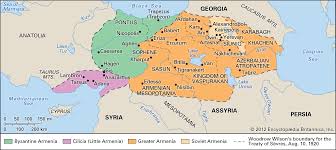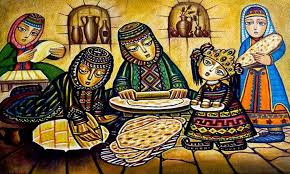Unveiling Armenia’s Enchanting Charms: A Journey Through History and Beauty

The Enchanting Beauty of Armenia
Armenia, a country nestled in the Caucasus region, is a land of captivating landscapes, rich history, and vibrant culture. From ancient monasteries perched on rugged mountains to bustling markets filled with the aroma of traditional delicacies, Armenia offers a tapestry of experiences for visitors to explore.
One of the most striking features of Armenia is its diverse geography. The country is home to lush forests, sparkling lakes, and snow-capped peaks that provide a stunning backdrop for outdoor enthusiasts and nature lovers. Lake Sevan, the largest lake in the Caucasus, is a popular destination for those seeking tranquillity and natural beauty.
Armenia’s history is as fascinating as its landscapes. With a heritage dating back thousands of years, the country boasts ancient archaeological sites such as Garni Temple and Geghard Monastery, both UNESCO World Heritage Sites that showcase the architectural prowess of past civilizations.
The warmth and hospitality of the Armenian people are evident in their vibrant culture. Traditional music and dance performances offer a glimpse into the soul of the nation, while local markets brim with colourful handicrafts and fresh produce that reflect Armenia’s culinary delights.
As you traverse through Armenia’s winding streets and verdant valleys, you’ll encounter a blend of old-world charm and modern innovation that makes this country truly unique. Whether you’re exploring historic Yerevan or hiking through the rugged terrain of Dilijan National Park, Armenia promises an unforgettable journey filled with beauty and wonder.
Discover the magic of Armenia for yourself and immerse yourself in a world where history meets hospitality, nature meets culture, and every moment is an opportunity to create cherished memories.
Exploring Armenia: 7 Tips for Discovering Its Rich Culture, Cuisine, and Hospitality
- Armenia is a landlocked country located in the South Caucasus region of Eurasia.
- The capital and largest city of Armenia is Yerevan.
- Armenian cuisine is known for its rich flavours and traditional dishes like dolma and lavash.
- Armenia has a rich cultural heritage with ancient monasteries, churches, and historical sites to explore.
- Mount Ararat, a dormant volcano and national symbol of Armenia, is believed to be the resting place of Noah’s Ark.
- When visiting Armenia, make sure to try Armenian brandy which is famous worldwide.
- Armenians are known for their hospitality and warmth towards guests.
Armenia is a landlocked country located in the South Caucasus region of Eurasia.
Armenia is a landlocked country situated in the South Caucasus region of Eurasia. Surrounded by Georgia to the north, Azerbaijan to the east, Iran to the south, and Turkey to the west, Armenia’s strategic location has shaped its history and culture over millennia. Despite being landlocked, Armenia’s breathtaking landscapes, rich heritage, and warm hospitality continue to attract visitors from around the world, offering a glimpse into a country that seamlessly blends tradition with modernity.
The capital and largest city of Armenia is Yerevan.
Yerevan, the capital and largest city of Armenia, is a vibrant metropolis that blends ancient history with modern charm. Known for its pink-hued buildings and grand Soviet-era architecture, Yerevan is a cultural hub where bustling markets, lively cafes, and historic landmarks converge. The city’s rich heritage is reflected in its museums, theatres, and galleries, offering visitors a glimpse into Armenia’s past while embracing the dynamic energy of its present. With a backdrop of majestic Mount Ararat on the horizon, Yerevan invites exploration and discovery, promising an unforgettable experience for all who wander its streets.
Armenian cuisine is known for its rich flavours and traditional dishes like dolma and lavash.
Armenian cuisine is renowned for its exquisite blend of rich flavours and time-honoured recipes that have been passed down through generations. Dishes such as dolma, with its tender grape leaves enveloping a savoury rice filling, and lavash, the soft and thin unleavened flatbread, are emblematic of Armenia’s culinary heritage. Each bite offers a taste of tradition and a glimpse into the culinary artistry that defines Armenian gastronomy.
Armenia has a rich cultural heritage with ancient monasteries, churches, and historical sites to explore.
Armenia boasts a rich cultural heritage, inviting visitors to delve into its ancient past through a tapestry of monasteries, churches, and historical sites. Each site tells a story of Armenia’s enduring legacy, offering a glimpse into the country’s spiritual and architectural history. From the majestic monasteries perched atop rugged cliffs to the ornate churches adorned with intricate carvings, exploring Armenia’s cultural treasures is a journey through time that promises to captivate and inspire all who seek to uncover its profound significance.
Mount Ararat, a dormant volcano and national symbol of Armenia, is believed to be the resting place of Noah’s Ark.
Mount Ararat, a dormant volcano and national symbol of Armenia, holds a special place in the country’s folklore and heritage. Revered as the legendary resting place of Noah’s Ark, this majestic peak stands as a powerful symbol of resilience and hope for the Armenian people. The sight of Mount Ararat on the horizon evokes a sense of awe and wonder, connecting present-day Armenia to its ancient past and stirring the imagination with tales of survival and rebirth.
When visiting Armenia, make sure to try Armenian brandy which is famous worldwide.
When visiting Armenia, be sure to indulge in the exquisite experience of tasting Armenian brandy, renowned globally for its exceptional quality and rich flavour. Produced with meticulous craftsmanship and a tradition that spans centuries, Armenian brandy offers a sensory journey that captures the essence of the country’s heritage and expertise in distillation. Sip on this iconic spirit to savour a taste of Armenia’s esteemed contribution to the world of fine beverages.
Armenians are known for their hospitality and warmth towards guests.
Armenians are renowned for their exceptional hospitality and genuine warmth when welcoming guests. From offering traditional sweets and aromatic coffee to sharing heartfelt conversations, Armenians take pride in making visitors feel like cherished members of their community. This culture of hospitality is deeply ingrained in Armenian traditions, reflecting a genuine desire to connect with others and create lasting bonds through shared experiences and mutual respect.

